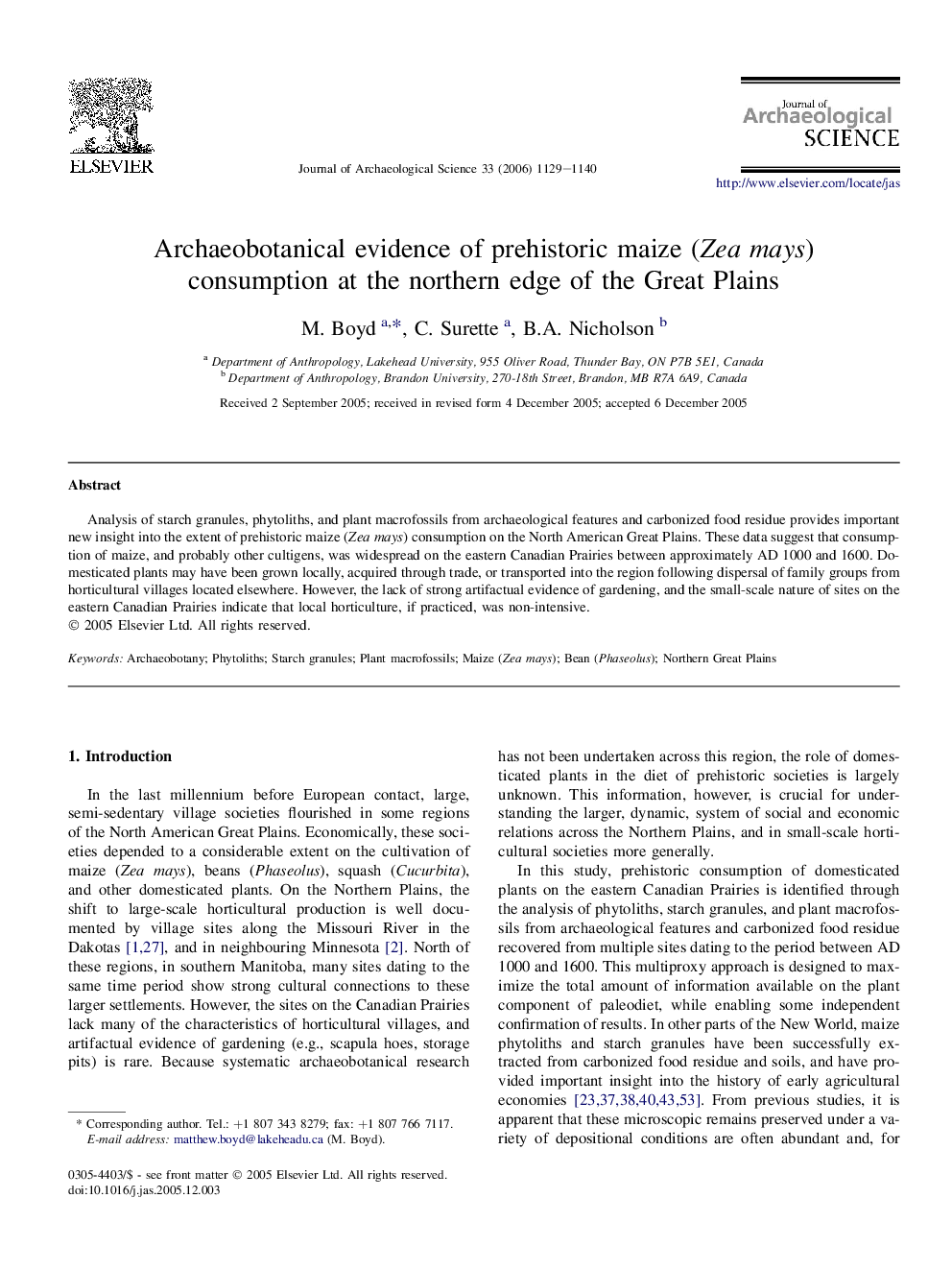| Article ID | Journal | Published Year | Pages | File Type |
|---|---|---|---|---|
| 1037510 | Journal of Archaeological Science | 2006 | 12 Pages |
Analysis of starch granules, phytoliths, and plant macrofossils from archaeological features and carbonized food residue provides important new insight into the extent of prehistoric maize (Zea mays) consumption on the North American Great Plains. These data suggest that consumption of maize, and probably other cultigens, was widespread on the eastern Canadian Prairies between approximately AD 1000 and 1600. Domesticated plants may have been grown locally, acquired through trade, or transported into the region following dispersal of family groups from horticultural villages located elsewhere. However, the lack of strong artifactual evidence of gardening, and the small-scale nature of sites on the eastern Canadian Prairies indicate that local horticulture, if practiced, was non-intensive.
